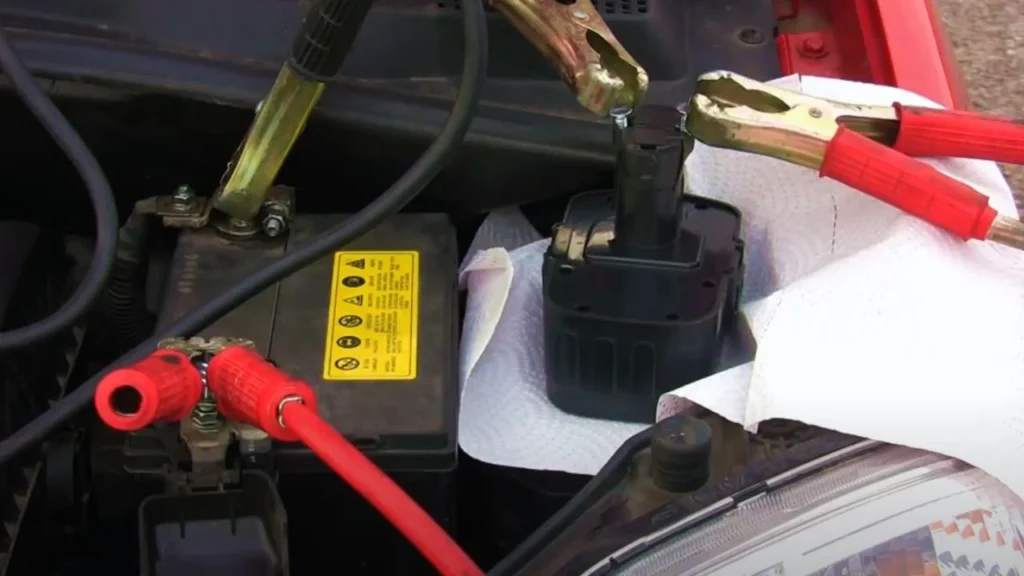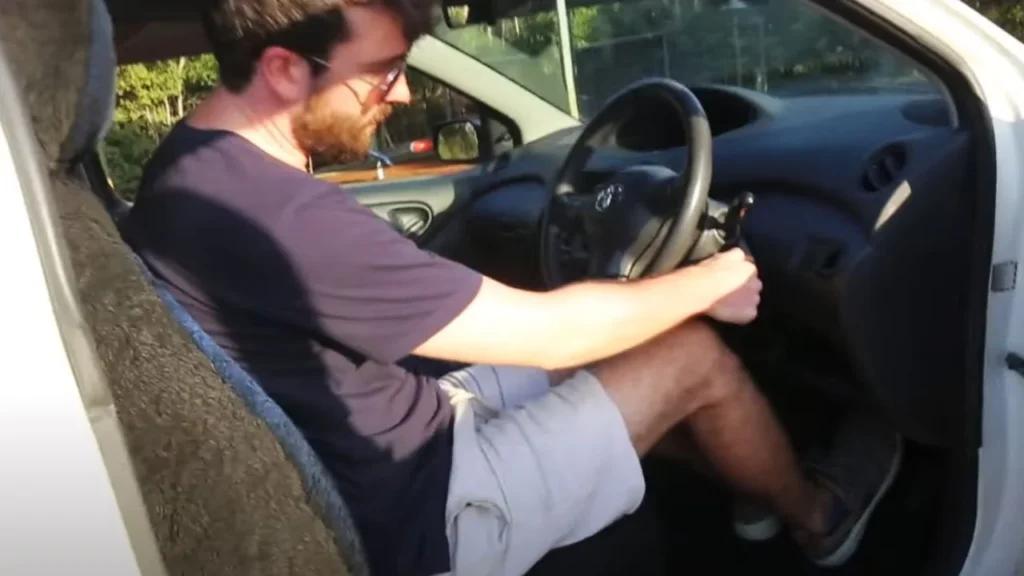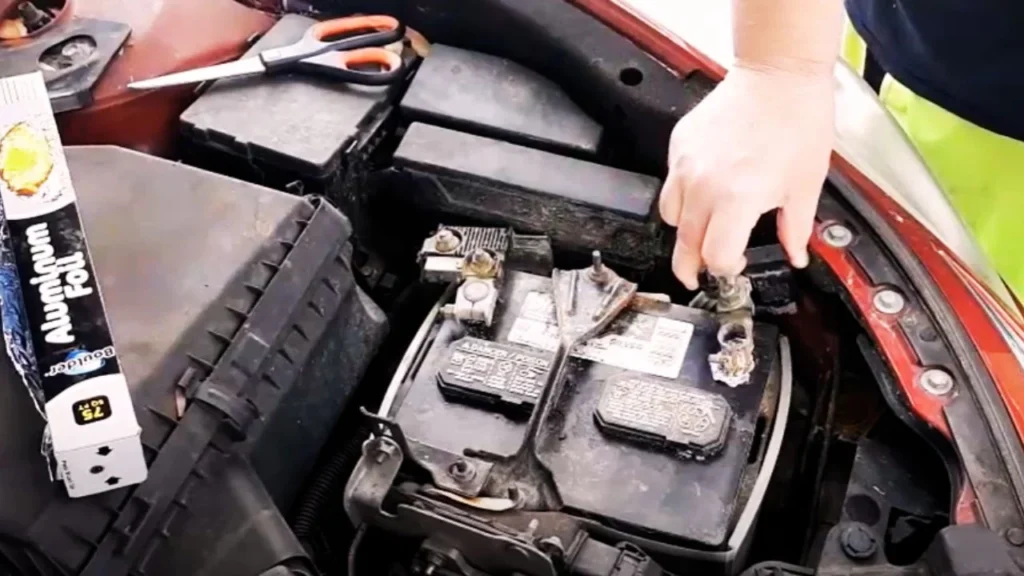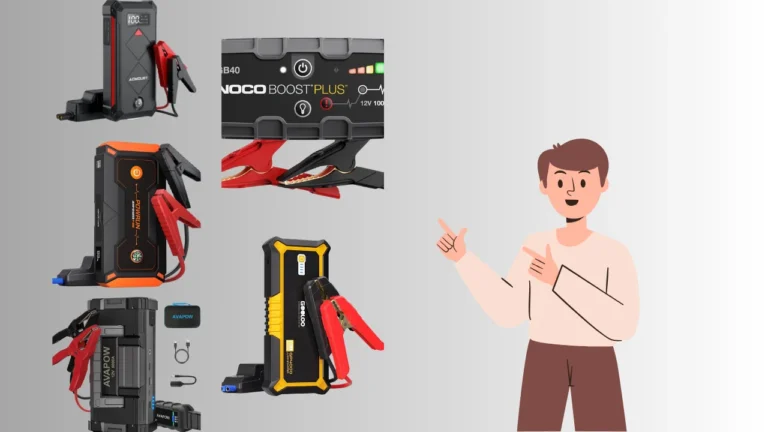Jump-starting a car with a dead battery is a common scenario, but what if you’re stranded without jumper cables or a second vehicle to help? So, what household items can jumpstart a car? Surprisingly, there are various household items you can use to jump-start your car in a pinch.

While these methods are unconventional and should be treated as temporary fixes, they can help you get back on the road when you’re stuck. In this blog, we’ll explore why and how you can use common household items to jump-start a car, along with detailed step-by-step guides for each method. Learn how to safely jump-start a box truck with this guide on jump-starting a box truck, covering essential tools and step-by-step instructions.
Why Use Household Items to Jump-Start a Car?
Using household items to jump-start a car isn’t a long-term solution, but it can be incredibly handy when you don’t have traditional tools available. Here are some reasons why this might be necessary:

- Emergencies: You may find yourself stranded in a location where professional help or jump leads aren’t accessible.
- No Second Vehicle: If there’s no other vehicle around, household items can sometimes substitute for jumper cables.
- Cost-Effective: These hacks use items you likely already own, potentially saving you from needing to purchase expensive tools.
However, it’s important to remember that while these methods work, they can carry risks and should be used with caution. Professional help is always recommended when available. Explore whether it is bad to keep jump-starting your car battery, including the long-term effects it may have on your vehicle’s performance.
What Household Items Can Jumpstart a Car | Using 4 Items
So, what household items can jumpstart a car? In emergencies, you can jump-start a car using household items like a drill battery, laptop charger, UPS battery, or even Coke to clean corroded terminals. Here’s how these methods work.
1. Drill Battery
One of the most effective ways to jump-start a car using household items is with a power drill battery. If you have a cordless drill with a 12V-20V battery, it can serve as a makeshift jump starter.

Items Needed:
- A fully charged drill battery (12V-20V)
- Sturdy, solid-core copper wire
- Alligator clips (optional, but recommended)
Steps:
- Prepare the Wires: Attach solid-core copper wires to the positive and negative terminals of the drill battery.
- Turn Off the Ignition: Ensure the car’s ignition is off before proceeding.
- Connect Wires to the Car Battery: Attach the positive wire to the positive terminal of the car battery and the negative wire to an unpainted metal surface on the car’s frame.
- Wait for Power Transfer: Allow a few minutes for the power to transfer from the drill battery to the car battery.
- Start the Car: After 5-10 minutes, attempt to start the car. If successful, disconnect the wires carefully.
This method is a great temporary solution, especially if you have power tools lying around. Discover the steps for jump-starting a Mini Cooper efficiently and avoid damaging your car’s sensitive electronics.
2. Laptop Charger
Some laptop chargers, particularly those with 15V output, can be used in emergencies to charge your car battery.

Items Needed:
- A laptop charger (15V)
- A headlight bulb (to limit current)
Steps:
- Prepare the Charger: Plug the charger into a power source, and use the headlight bulb in series with the charging lead to prevent overloading.
- Connect to Car Battery: Attach the leads to the car battery’s terminals—positive to positive, negative to negative.
- Charge for a Few Minutes: Let the charger run for a few minutes to build up enough charge.
- Start the Car: Attempt to start the car after charging.
While not a foolproof method, this can work in a pinch.
3. UPS (Uninterruptible Power Supply) Battery
If you have a UPS system at home for your computer, it may contain 12V lead-acid batteries, similar to those used in cars. You can use the UPS’s internal battery to jump-start your car.

Items Needed:
- A UPS unit with a 12V battery
- Wires or clips
Steps:
- Access the UPS Battery: Open the UPS unit to access the 12V battery.
- Connect to Car Battery: Use wires to connect the positive and negative terminals of the UPS battery to the corresponding car battery terminals.
- Wait for Power Transfer: Give it a few minutes for the power to transfer.
- Start the Car: Attempt to start the car, then disconnect the UPS safely once it starts.
This method works if your UPS battery has enough power, but ensure you connect everything correctly to avoid damage.
4. Coke or Baking Soda for Corroded Terminals
If your battery terminals are corroded, they can prevent a proper connection and cause starting issues. Household items like Coke or baking soda can help clean the terminals and improve connectivity.

Items Needed:
- A can of Coke or baking soda mixed with water
- A wire brush or toothbrush
Steps:
- Pour Coke on Terminals: Pour a small amount of Coke over the corroded terminals. The acids in Coke help dissolve the corrosion.
- Scrub with a Brush: Use a toothbrush or wire brush to scrub the terminals.
- Rinse and Dry: Rinse with water and dry the terminals before reconnecting them.
Alternatively, you can use baking soda and water to create a paste and clean the terminals. This helps ensure a good connection for jump-starting. Understand the process and precautions when jump-starting a 24V system with a 12V battery to prevent system overloads.
How to Push-Start a Manual Car?
If your car has a manual transmission, push-starting is another way to revive a dead battery without any special tools.

Steps:
- Get Helpers: Find at least two people to help push the car, or use a downhill slope if you’re alone.
- Ignition and Gear: Turn the ignition on and put the car in second gear.
- Push and Release Clutch: Have your helpers push the car while you release the clutch once you’ve reached about 5-10 mph.
- Start the Car: The momentum should cause the engine to turn over and start.
This method is highly effective but only works for manual cars. Discover practical advice on how to jumpstart a refrigerator compressor, a useful guide for when your fridge stops cooling properly.
Additional Household Solutions for Car Battery Issues
Aside from the well-known methods like using a drill battery or push-starting your manual car, there are several other household items that can come in handy when dealing with car battery problems.
These methods won’t necessarily jump-start your car directly but can play a crucial role in ensuring that your battery is in the best condition to be revived. Below are some extra items that you likely have at home, which can help you in a pinch.
1. Using Aluminum Foil for Battery Terminals
Over time, your car battery terminals can become corroded or loose, which can prevent proper electrical flow, making it hard for the car to start. Aluminum foil can serve as a quick fix to improve contact and keep the battery functioning.

How It Works:
If your battery terminals are loose, wrap a small piece of aluminum foil around the terminals before reconnecting the clamps. This helps create a tighter connection, allowing electricity to flow better between the car battery and the car’s electrical system.
While this method won’t necessarily jump-start your car, it can help if the problem stems from a loose connection, which is a common issue. Be cautious when working with battery terminals, and ensure the car is off when applying the foil.
2. Using a Hair Dryer to Warm the Battery in Cold Weather
Car batteries can lose their charge in extremely cold temperatures, making it harder to start the car. Cold weather causes the battery’s chemical reactions to slow down, reducing its ability to generate power. A household hair dryer can be used to gently warm up the battery.

Steps:
- Plug in a hair dryer and turn it on to a low or medium setting.
- Open the car hood and point the hair dryer at the battery for a few minutes.
- Try starting the car after warming the battery.
This method helps raise the temperature of the battery enough to restore its normal chemical reactions, potentially giving it enough energy to start the car. It’s a simple but effective solution, especially during winter.
3. Using a Rope to Jump-Start a Manual Car
In addition to the push-start method, there’s another trick for manual cars that involves using a sturdy rope. This method mimics push-starting, except it requires no helpers or downhill slope.

Steps:
- Jack up the front end of the car (so one of the drive wheels is off the ground).
- Place the car in second gear.
- Wrap a rope around the elevated wheel and pull it sharply to spin the wheel.
- Release the clutch quickly to engage the engine as you would in a push start.
This technique can be challenging, but it’s a great alternative when no one is available to help push your car.
4. Cleaning Battery Terminals with Baking Soda
Corroded battery terminals can prevent the car from starting, even if the battery itself is still functional. A quick and safe way to clean the corrosion is by using a baking soda solution, which is a common household item.

How to Do It:
- Mix one tablespoon of baking soda with a cup of water.
- Disconnect the battery terminals and use an old toothbrush to apply the mixture to the corroded areas.
- Scrub the terminals thoroughly, then rinse with clean water.
- Dry the terminals completely before reconnecting them.
This method helps ensure a solid connection between the battery and the car’s electrical system. Clean terminals can prevent the need for a jump-start in the future.
Wrapping Up:
Using household items to jump-start a car is possible but should always be considered a last resort. While methods like using a drill battery, laptop charger, or UPS unit can work in a pinch, they come with potential risks and should be handled with care. If you’re ever in a situation where professional help is available, that’s always the safest option.
Regular vehicle maintenance, including checking your battery’s health, can prevent many of these emergencies in the first place. Keep a portable jump starter in your car to avoid relying on these makeshift solutions. Hope so, now you know the answer to: What household items can jumpstart a car? Learn the step-by-step process on how to jump-start a diesel truck with 2 batteries, ensuring you avoid potential mistakes that could damage your vehicle or batteries.
Ali is a tech enthusiast and automotive aficionado, passionate about sharing insights on the latest innovations and industry trends.





